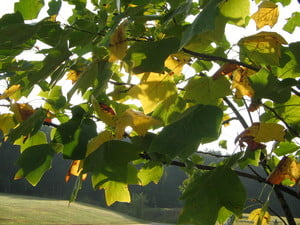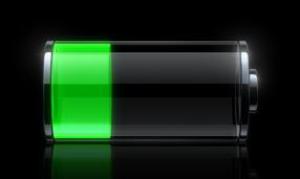Patio trees provide aesthetic appeal and shade over a patio area. Normally, planting is done in the ground rather than in containers though both can be done. A container tree, preferably in a lightweight container placed on the patio provides an interesting splash of color. When searching for a patio tree, look at your site and determine where you want it to be planted. Do you want it to be used as a focal point? Or would you like to position it in an area for dramatic shade?
Many factors need to be considered in determining the perfect tree. One consideration is if the roots of the tree will rip up pavement because it will need deep, long, and strong roots. The best choice of patio tree for most people is those with limited growth. Dwarf trees (that grow under a maximum of ten feet) are the most common patio trees. Larger varieties can be planted for larger patio areas.
One factor when looking for the perfect tree is finding one that will grow large enough to provide adequate shade but not overtake the area. Fruit trees produce fruit that can make a mess and bring bugs to the area so they may want to be avoided. Another important factor is finding one that can withstand the weather conditions of the area. A person at a nursery can help you in this regard. Durable, long-lived small trees are the best choice for patios.
Also consider a person’s allergies, blooms, schedule, and seasonal elements (flowers, bark, leaves, structural beauty, fragrance, and if it attracts wildlife) before making your purchase. Trimming will be needed for any type you select. Most varieties will outgrow the area you select so be certain you allow for a lot of room when planting.
Crape Myrtle
As known as Lagerstroemia Indica, the Crape Myrtle is beautiful. Next to Mimosas, the Crape Myrtle is my favorite. The Crape Myrtle blooms during the hottest part of summer. By fall, the tree produces great color from yellow to bright orange. Crape Myrtles can grow from 15 to 25 feet and spread 10 to 15 feet. Crape Myrtles are common domestically and apparently do not involve a lot of upkeep.
Serviceberry
As known as the Amelanchier, the serviceberry is lovely. Amelanchier blooms in spring, provides fruit in summer, and has a nice color in the Fall. The fruit produced by this tree tastes like a cross between a blueberry and a raspberry. The fruit may prove a little messy on the patio but it is worth it for the taste of the fruit. In the Fall, the serviceberry turns a brilliant orange-red. The serviceberry is especially good for smaller patios as it grows between .2-20 meters tall.
Dwarf Southern Magnolia
As known as Magnolia Grandiflora, the Dwarf Southern Magnolia is an evergreen broadleaf. As such, the Dwarf Southern Magnolia retains its leaves through winter. The Dwarf Southern Magnolia can reach 28 feet high and spread 12 feet across. A lovely thing about the Dwarf Southern magnolia is the strong scent of lemon it provides. Dwarf Southern Magnolias will not survive summer fires. The Magnolia Grandiflora prefers warmer climates and is slow growing. The Dwarf Southern Magnolia also prefers well drained soil but increased moisture. Because the Dwarf Southern Magnolia can reach tall heights, it is best for larger patios.
Rose Tree
The Rose Tree is also known as Rhododendron Maximum. I purchased one of these several summers ago without a clue as to how to keep it up so it died. I believe it died because this type of tree requires a lot of water. A Rhododendron Maximum will need some trimming when it grows to that point (mine never got that far). Rhododendron Maximums are beautiful and come in different colors. I have seen these available in purple, white, pink, and red. The blooms begin in June but can occur from March through August . The Rhododendron Maximum grows between 13 and 33 feet tall. A problem with the Rhododendron Maximum is they can inhibit the regeneration of other plant species.
Flowering Dogwood
The Flowering Dogwood or Cornus florida is beautiful and appropriate for very large patios. This tree can grow to be 33 ft tall. A Flowering Dogwood of this type is considered fully grown at 20 years, so at 10 years the flowering dogwood is typically ten feet tall. Flowering Dogwoods are one of the most beautiful types of trees available. These tend to flower in early April in the South. My grandmother’s Flowering Dogwood has blooms on it as of this writing and it is March. Flowering Dogwoods prefer mostly acidic soil, afternoon shade, and good morning sun. Do not expose the Flowering Dogwood to intense heat.







